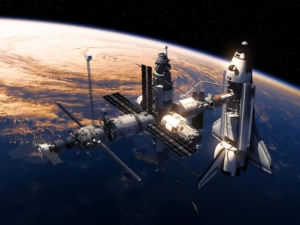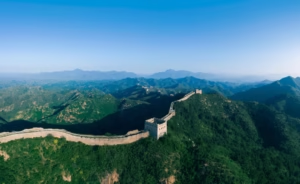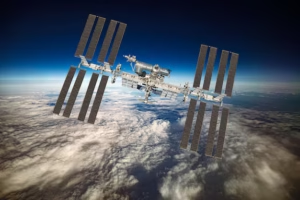The Beautiful and Wild World of the Savanna Grassland

The Savanna grasslands are some of the most exciting and unique ecosystems on Earth. They are full of life, both plant and animal, and stretch across many parts of the world. These grasslands are best known for their wide, open spaces, scattered trees, and the amazing animals that live there, such as lions, elephants, and zebras.
1. What is a Savanna Grassland?
A Savanna grassland is a type of ecosystem that lies between a tropical rainforest and a desert. It usually has:
- Grasses as the main vegetation
- Scattered trees or shrubs
- A hot climate
- A distinct wet and dry season
The balance between enough rain for grass and trees to grow, but not enough to create a full forest, is what creates a savanna. These conditions make it the perfect home for many herbivores and the carnivores that hunt them.
2. Where Are Savannas Found?
Savannas are mainly found in warm or hot climates with seasonal rainfall. The largest and most famous savanna is in Africa, but savannas also exist in other parts of the world.
Main Areas with Savanna Grasslands:
- Africa: The African Savanna is the most well-known and the largest in the world. Countries like Kenya, Tanzania, South Africa, Botswana, and Zambia have large savanna areas. The Serengeti Plains and Kruger National Park are famous savanna regions.
- Australia: Northern Australia has vast areas of tropical savanna, home to unique animals like kangaroos and emus.
- South America: In Brazil, the Cerrado is a huge savanna ecosystem, one of the most diverse in the world.
- Asia: Parts of India, such as the Deccan Plateau, have savanna-like regions with grasslands and scattered trees.
- North America: Small patches of savanna ecosystems can be found in the southeastern U.S., like parts of Florida.

3. Climate of the Savanna
The savanna grassland has a very distinct climate, which includes:
- Warm temperatures all year round
- A dry season and a rainy season
- Rainfall between 500 to 1500 mm annually
During the wet season, the grass grows tall and green. This is when most animals give birth and food is plenty. During the dry season, water becomes scarce, grasses turn brown, and animals must migrate or compete for resources.
https://sypertimes.com/kangra-the-land-of-gods-valleys-and-ancient-heritage/
4. Plants and Vegetation in the Savanna
Savannas are mainly made up of tall grasses, with scattered trees and shrubs. Because of the dry season and occasional fires, only certain plants can survive.
Common Plants in the Savanna:
- Grasses: Elephant grass, red oat grass, and Rhodes grass are common.
- Trees: Acacia, baobab, and eucalyptus trees.
- Shrubs and Bushes: Thorny bushes that are resistant to drought and fire.
These plants have special adaptations. For example, acacia trees have long roots to reach water and sharp thorns to keep animals away.

5. Animals of the Savanna
The savanna is home to some of the world’s most iconic animals. Because the open space allows for easy movement and sight, it’s ideal for both predators and prey.
Herbivores (Plant-Eaters):
- Elephants – The largest land animals, they roam in herds looking for water and food.
- Zebras – Often seen in groups, they graze on grasses.
- Giraffes – Their long necks allow them to eat leaves from tall trees.
- Antelopes – Like gazelles and impalas, which are fast and alert.
- Buffaloes – Strong and social animals that move in large herds.
Carnivores (Meat-Eaters):
- Lions – Called the “king of the jungle,” lions live in groups called prides and hunt large prey.
- Cheetahs – The fastest land animals, they hunt smaller herbivores.
- Leopards – Solitary hunters that can climb trees with their prey.
- Hyenas – Often scavengers but also skilled hunters.
Birds and Insects:
- Ostriches – The largest birds on Earth, native to the African savanna.
- Secretary birds – Known for hunting snakes.
- Termites – Build large mounds that provide shelter for many other animals.
- Beetles, butterflies, and ants – Very important for the ecosystem.
6. Adaptations of Savanna Animals
Animals in the savanna have adapted in many ways to survive:
- Camouflage – Many animals have colors that blend with dry grasses.
- Migration – Animals like wildebeests travel long distances for water and food.
- Speed and Alertness – Prey animals are fast and have sharp senses to avoid predators.
- Water Storage – Some animals can go for days without water.
7. Biodiversity and Importance
The savanna is one of the most biodiverse ecosystems on Earth. It supports:
- Thousands of plant and animal species
- Many endangered animals
- Important ecological functions
Savannas help control climate, store carbon, and prevent soil erosion. They also provide resources like food, wood, and medicine for local people.
8. Human Impact on Savanna Ecosystems
Unfortunately, savannas are under threat due to human activities:
- Deforestation – Cutting down trees for farming or fuel.
- Overgrazing – Too many livestock eat all the grass, damaging the land.
- Climate Change – Changes in rainfall and temperature affect the balance.
- Poaching – Illegal hunting of animals like elephants and rhinos.
These activities harm the delicate balance of life in the savanna and threaten many species.

9. Conservation of Savanna Grasslands
Many organizations and governments are working to protect the savanna. Here are some key steps:
- Creating National Parks – Protected areas like Serengeti National Park and Kruger National Park help preserve wildlife.
- Anti-Poaching Laws – Efforts to stop illegal hunting.
- Sustainable Farming – Teaching local communities to farm in ways that protect the land.
- Reforestation Projects – Planting native trees and grasses.
Ecotourism is also helping. Tourists bring money that supports conservation and local economies, encouraging people to protect nature.
10. Fun Facts About the Savanna
- The African savanna is home to the “Big Five” animals: lion, leopard, elephant, buffalo, and rhinoceros.
- A wildebeest migration in Africa is one of the largest animal movements on Earth—over 1.5 million animals move across the Serengeti!
- The baobab tree, known as the “tree of life,” can live for over 1,000 years and store thousands of liters of water.
Conclusion
The Savanna grassland is a place of great beauty, life, and wonder. From the tall grasses waving in the wind to the thrilling chase of predator and prey, the savanna is full of stories of survival, adaptation, and balance.
But the savanna is also fragile. With increasing threats from human activity and climate change, it is more important than ever to protect this amazing ecosystem. By learning about and respecting the savanna, we can help ensure that future generations can enjoy its rich wildlife and natural beauty.




